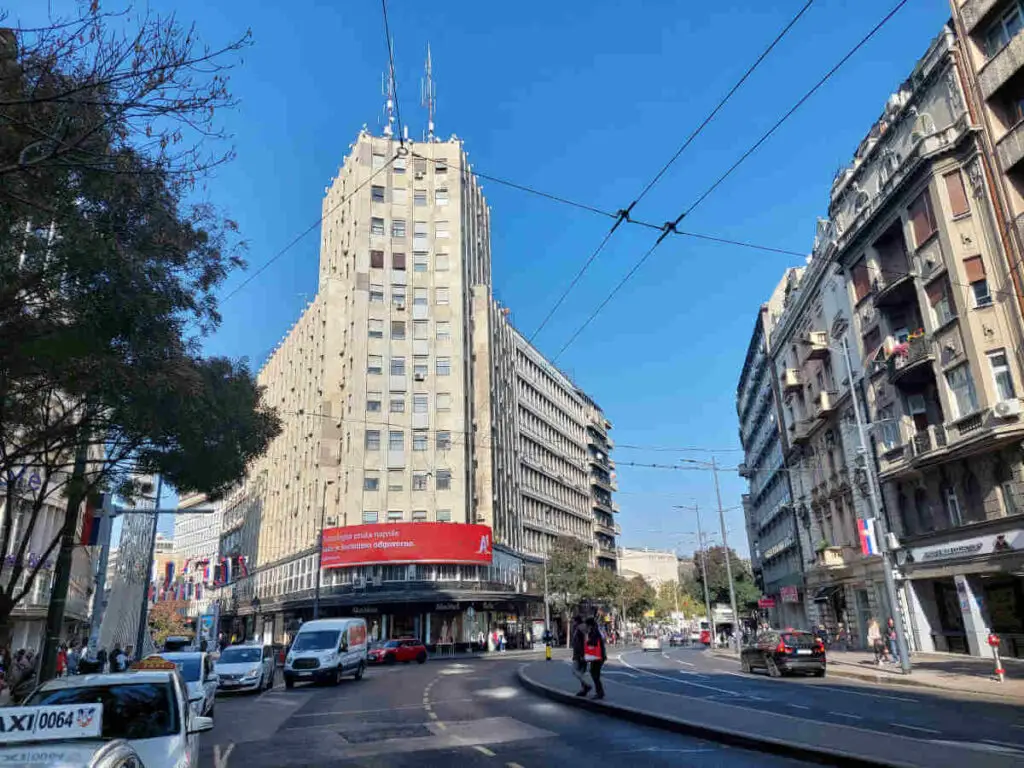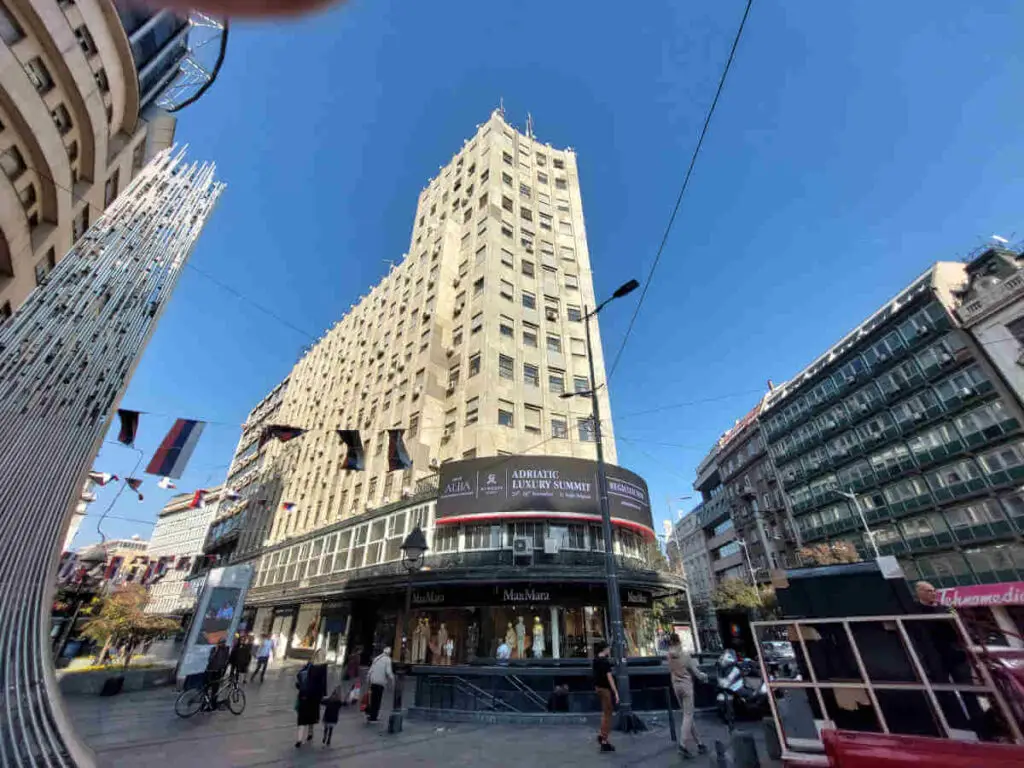Belgrade’s skyline is marked by striking skyscrapers like the new West 65 Tower and Belgrade Tower, as well as iconic structures from the communist era such as the Genex Tower. But long before these modern high-rises emerged, the city’s very first tall building was Palace Albania.

Located at the entrance to the bustling pedestrian zone of Knez Mihailova Street, at the corner with Kolarčeva Street, Palace Albania no longer stands out as a skyscraper by today’s standards. Yet when it was built in the late 1930s, its sleek modern design made it the most dominant and innovative structure in the city.
Palace Albania’s name is a tribute to the famous “Albania” tavern that had been located on this site since 1860. By the mid-1930s, however, the tavern had fallen into such disrepair that an inspection report declared it beyond saving. Despite its dilapidated condition, it remained a beloved gathering spot for Belgrade residents, cherished for its vibrant social scene.
Although it was a favorite meeting place for locals, the tavern was ultimately demolished in October 1936 to make way for a new architectural icon. Belgrade residents were deeply saddened by the demolition of the shabby yet well-known tavern. They began to gather in the evening, drinking and celebrating until midnight, and even shed a few tears.

In the 19th century, Belgrade’s buildings were primarily low-rise, with only a few one-story structures. Western influences were just beginning to reach the city, and the construction of Palace Albania was groundbreaking. At the time, it was considered one of the finest architectural, urban, and sculptural achievements in Belgrade’s history, and it immediately earned recognition within the architectural community.
With its monumental appearance and significant structural and architectural innovations, Palace Albania was an exceptional construction feat that held the title of the tallest building in Belgrade and the Balkans until the Beogradjanka (Belgrade Palace) was completed. Prior to Palace Albania, the tallest building in Belgrade was the Hotel Moskva.

The building features 13 floors above ground and four underground levels, standing 53 meters tall with a total area of 8,000 m². Designed in the international style of modernism, Palace Albania features a minimalist façade clad in grey-blue marble, complemented by art deco-inspired decorative and functional elements.
Interestingly, as reported by Srpska Televizija, excavating the foundations for the future Palace Albania uncovered a fascinating discovery: the skeletons of a mammoth and a human, believed to have perished in a violent confrontation.
In 1984, Palace Albania was officially designated as a cultural monument, marking its significance in Yugoslav modernist architecture.


Leave a Reply